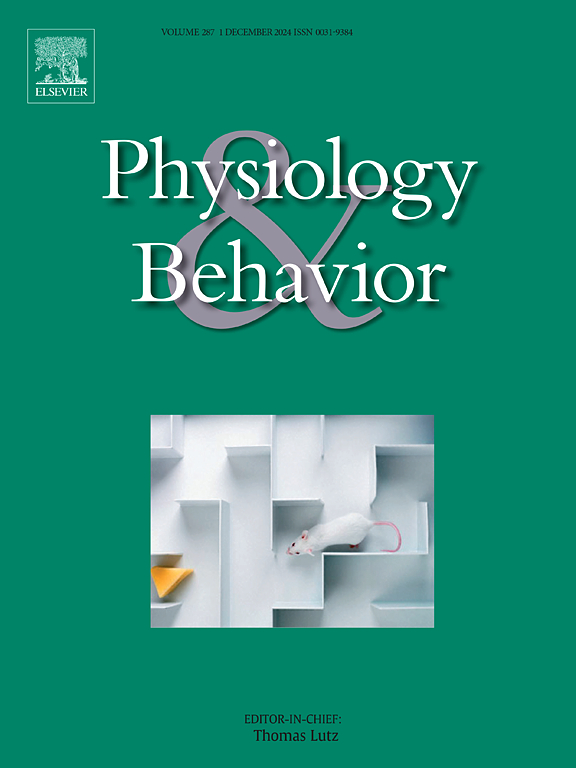Potential effects of long-term nanoselenium administration on memory deficits associated with peripheral neuropathic pain through alteration of hippocampal Tau and proinflammatory cytokines
IF 2.4
3区 医学
Q2 BEHAVIORAL SCIENCES
引用次数: 0
Abstract
Background
Chronic neuropathic pain is frequently associated with memory disorders linked to hippocampal alteration. Recognizing this co-morbidity could enhance treatment effectiveness. Prior studies have shown that nanoselenium possesses pain-relieving and memory-protecting properties, suggesting its potential in treating neuropathic pain and its associated co-morbidity.
Objective
This study aimed to examine the effects of long-term nanoselenium administration on pain-related behaviors and co-morbid memory disorders in rats with chronic constriction injury (CCI) of the sciatic nerve.
Methods
The study involved 32 adult male albino Wistar rats, divided into four groups: Control, CCI, CCI+nanoselenium, and CCI+vehicle (n = 8, each group). Nanoselenium or vehicle was administered intraperitoneally for two weeks after CCI surgery. Pain-related behavior was assessed using the acetone test and the Randal-Selitto test, while memory-related behavior was evaluated using a passive avoidance (shuttle-box) test. Additionally, the study involved identifying Tau positive cells through an Immunohistochemistry procedure and measuring IL-1 and TNF levels in the hippocampus using an enzyme-linked immunosorbent assay (ELISA) to explore potential relationships.
Results
The data indicated that CCI results in chronic neuropathic pain-related behaviors and memory disorders in rats. Long-term treatment with nanoselenium significantly increased pain threshold (F(1,3)=184.261, P = 0.000), improved memory (F(3,28)=170.726 ,F(3,28)=128.177,F(3,28)=41.552, P = 0.000) and decreased the hippocampal levels of IL-1β (F(3,28)=62.68, P = 0.000), TNFα (F(3,28)=173.12, P = 0.000), and the Tau positive cells/mm³ (F(3,28)=45.26, P = 0.000) in CA1 region in CCI rats.
Conclusion
Long-term administration of nanoselenium ameliorated pain-related behavior and improved memory disorder induced by CCI. This effect was associated with altered pro-inflammatory and Tau protein in the rats' hippocampus.
长期给药纳米硒通过改变海马Tau和促炎细胞因子对与周围神经性疼痛相关的记忆缺陷的潜在影响
背景:慢性神经性疼痛常与海马改变相关的记忆障碍有关。认识到这种合并症可以提高治疗效果。先前的研究表明,纳米硒具有缓解疼痛和保护记忆的特性,这表明它在治疗神经性疼痛及其相关并发症方面具有潜力。目的:研究长期给予纳米硒对坐骨神经慢性收缩损伤大鼠疼痛相关行为及共病性记忆障碍的影响。方法:选用成年雄性白化Wistar大鼠32只,随机分为对照组、CCI组、CCI+纳米硒组和CCI+载药组(每组8只)。CCI手术后,腹腔注射纳米硒或载体两周。疼痛相关行为采用丙酮测试和Randal-Selitto测试评估,记忆相关行为采用被动回避(穿梭箱)测试评估。此外,该研究涉及通过免疫组织化学方法鉴定Tau阳性细胞,并使用酶联免疫吸附试验(ELISA)测量海马中的IL-1和TNF水平,以探索潜在的关系。结果:CCI引起大鼠慢性神经性疼痛相关行为和记忆障碍。纳米硒长期治疗可显著提高CCI大鼠痛阈值(F(1,3)=184.261, P=0.000),改善记忆(F(3,28)=170.726,F(3,28)=128.177,F(3,28)=41.552, P=0.000),降低CA1区IL-1β (F(3,28)=62.68, P=0.000)、TNFα (F(3,28)=173.12, P=0.000)和Tau阳性细胞/mm³(F(3,28)=45.26, P=0.000)水平。结论:长期给予纳米硒可改善CCI所致的疼痛相关行为和记忆障碍。这种效果与大鼠海马中促炎蛋白和Tau蛋白的改变有关。
本文章由计算机程序翻译,如有差异,请以英文原文为准。
求助全文
约1分钟内获得全文
求助全文
来源期刊

Physiology & Behavior
医学-行为科学
CiteScore
5.70
自引率
3.40%
发文量
274
审稿时长
47 days
期刊介绍:
Physiology & Behavior is aimed at the causal physiological mechanisms of behavior and its modulation by environmental factors. The journal invites original reports in the broad area of behavioral and cognitive neuroscience, in which at least one variable is physiological and the primary emphasis and theoretical context are behavioral. The range of subjects includes behavioral neuroendocrinology, psychoneuroimmunology, learning and memory, ingestion, social behavior, and studies related to the mechanisms of psychopathology. Contemporary reviews and theoretical articles are welcomed and the Editors invite such proposals from interested authors.
 求助内容:
求助内容: 应助结果提醒方式:
应助结果提醒方式:


